
The Reverend Herbert Britton Gwyn (May 5, 1873 – March 26, 1934) was the editor of The Churchman, the New York weekly representing the Low Church faction of the Protestant Episcopal Church.

The Reverend Herbert Britton Gwyn (May 5, 1873 – March 26, 1934) was the editor of The Churchman, the New York weekly representing the Low Church faction of the Protestant Episcopal Church.
He was born on May 5, 1873, in Canada. [1] [2] He had been a minister at a church in Chicago before he started newspaper work. [3] He then worked at St. Edmund's Church in Chicago and married Virginia E. Perceval in 1914. [4] By 1930 he and his wife were living in Tiverton, Rhode Island. [2] He died on March 26, 1934. [5]

Samuel Provoost was an American clergyman. He was the first chaplain of the United States Senate and the first bishop of the Episcopal Diocese of New York, as well as the third Presiding Bishop of the Episcopal Church, USA. He was consecrated as bishop of New York in 1787 with Bishop William White. He was the first Episcopal Bishop of Dutch and Huguenot ancestry.
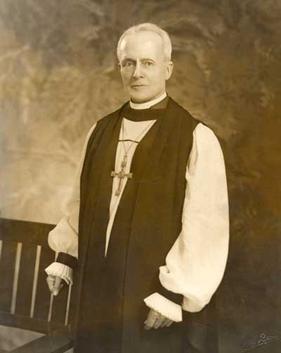
William Thomas Manning was a U.S. Episcopal bishop of New York City (1921–1946). He led a major $10 million campaign to raise funds for additional construction on the Cathedral of St. John the Divine, and directed a program to train and employ men from the neighborhood as skilled artisans during the Great Depression and later.
Francis Joseph Hall (1857–1932) was an American Episcopal theologian and priest in the Anglo-Catholic tradition. Hall was one of the first to attempt an Anglican systematic theology.

Thomas John Claggett was the first bishop of the newly formed American Episcopal Church to be consecrated on American soil and the first bishop of the recently established (1780) Diocese of Maryland.
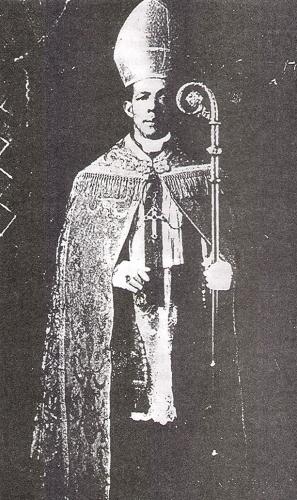
George Alexander McGuire was the founder of the African Orthodox Church, and a prominent member of Marcus Garvey's Universal Negro Improvement Association (UNIA).
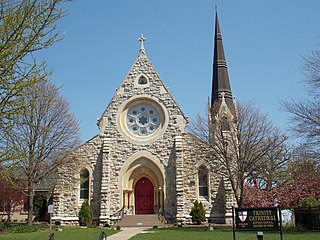
Trinity Episcopal Cathedral, formerly known as Grace Cathedral, is the historic cathedral in the Diocese of Iowa. The cathedral is located on the bluff overlooking Downtown Davenport, Iowa, United States. Completed in 1873, Trinity is one of the oldest cathedrals in the Episcopal Church in the United States. It was individually listed on the National Register of Historic Places in 1974. In 1983 the cathedral was included as a contributing property in the College Square Historic District, which is also listed on the National Register.
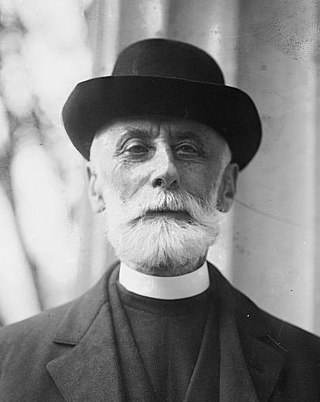
Alexander Schuyler Hamilton was an American Episcopal priest and great-grandson of Alexander Hamilton, the first Secretary of the Treasury of the United States. He was the rector of Emmanuel Episcopal Church in Weston, Connecticut, by 1893; St. Paul's Episcopal Church in Woodbury, Connecticut, by 1915; and Christ Church in Westport, Connecticut, until he retired in 1920. Hamilton was the chaplain for the Society of the Cincinnati and the Connecticut Society of the Sons of the Revolution. He was also a member of the Advisory Council for the Daughters of the Cincinnati.

The Church of Saint Luke and The Epiphany is an Episcopal congregation located at 330 South 13th Street between Spruce and Pine Streets in the Center City neighborhood of Philadelphia, Pennsylvania. It is part of the Diocese of Pennsylvania. The church was formed in 1898 as a result of the merger of St. Luke's Church (1839) and The Church of The Epiphany (1834), which consolidated at St. Luke's location.

Frederick William Taylor was the second bishop of the Episcopal Diocese of Quincy in the Episcopal Church.

Charles Lewis Slattery was the Episcopal Bishop of Massachusetts, a prominent theological writer in the early 20th century, and a leader of the Broad Church movement within the American Episcopal Church. He headed the commission that eventually published the 1928 Book of Common Prayer (BCP), which governed worship in Episcopal churches until 1979. Although he rejected the label of "liberal," his amendments to the Anglican liturgy steered the Episcopal Church away from the doctrines of original sin and total depravity, and towards gender equality. He also served as the president of the board of trustees of Wellesley College and helped establish Brooks School.
Albert S. Nicholson was a prominent religious leader of Clark County in what was then the Washington Territory, as well as a civic leader and educator.
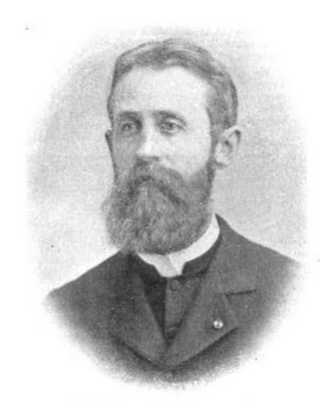
Gershom Mott Williams was an American bishop. He was the first Episcopalian bishop of Marquette. He was a church journalist, author, and translator. Williams graduated from Cornell University and received his master's degree and Doctor of Divinity degree from Hobart College. Although he passed the bar in 1879, Williams began an extensive career in the Episcopal Church, having positions in Buffalo, Milwaukee, and Detroit before becoming a bishop. He was involved in many church commissions, including the preparation of and attendance at the Lambeth Conference of 1908.

Mount Calvary Church is a Catholic parish located in the Seton Hill neighborhood of Baltimore, Maryland. The church was founded in 1842 as a mission congregation within the Episcopal Church and is now a community within the Personal Ordinariate of the Chair of Saint Peter of the Roman Catholic Church.
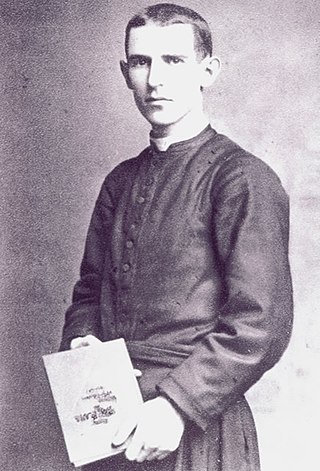
Joseph Richey was an Anglo-Irish priest of Episcopal Church in the United States. He was known for his work among the African-American community of Baltimore and for his high church Anglicanism. His feast day, September 23, is included in the Lesser Feasts and Fasts of the Episcopal Diocese of Maryland.
Nathaniel Smith Richardson was an American Episcopal minister, author, and editor of The American Church Review.
Albert Sidney Thomas was ninth bishop of the Episcopal Diocese of South Carolina, serving from 1928 to 1944. His father was John Peyre Thomas, Sr.
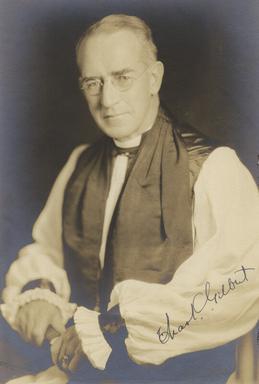
Charles Kendall Gilbert was bishop of the Episcopal Diocese of New York, serving from 1947 to 1950. He served as suffragan from 1930 to 1946. He retired in 1950.
Theodore Myers Riley was a prominent American Anglo-Catholic priest, author, and seminary professor born in Carlisle, Pennsylvania. A Civil War deserter from the Union Army, he was made a deacon on June 28, 1863, in the Episcopal Diocese of New York. He was ordained to the priesthood, also in the Diocese of New York, by Bishop Horatio Potter in 1866. He was a graduate of the General Theological Seminary.
William Henry Vibbert was a prominent American Hebraist and priest of the Episcopal Church. Born in New Haven, Connecticut, he was educated at the Episcopal Academy in Cheshire, Connecticut, Trinity College, Hartford and Berkeley Divinity School in Middletown, Connecticut. Following ordination to the priesthood by Bishop John Williams in 1863, he was Professor of Hebrew at Berkeley Divinity School, and rector of Christ Church, Middle Haddam, Connecticut 1863-1873; rector of St. Luke's Church, Germantown, Philadelphia (1873-1883); rector of St. James' Church, Chicago, (1883-1890); rector of St. Peter's Church, Philadelphia (1890-1891); and vicar of Trinity Chapel, Wall Street, New York. He was a deputy to the General Convention of the Protestant Episcopal Church in 1883, 1886, and 1889. He received the S.T.D. from Racine College in 1883. At St. James', Chicago, Vibbert assisted in the 1883 foundation of the Brotherhood of St. Andrew for laymen.
Guy Emery Shipler was an American journalist and Episcopal clergyman, known for editing The Churchman.
The Rev. Herbert B. Gwyn, the editor of The Churchman, the New York weekly representing the Low Church faction of the Protestant Episcopal Church, has resigned to take effect immediately. He is looking for a church again. He resigned a huge Chicago parish to enter newspaper work.
... Herbert B. Gwyn, rector of St Edmund's Church, Chicago. Ill.